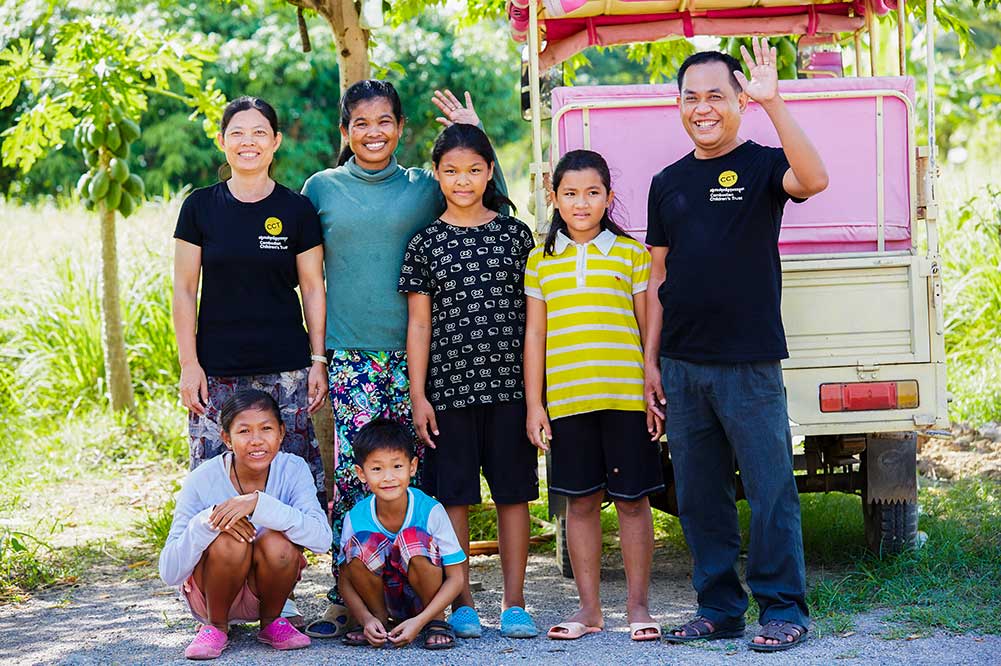- Village Hive
Our Village Hive model prevents multidimensional poverty by bringing multi-sector services into villages and mobilises community-wide action to protect children, prevent child-family separation, reunite families and foster long-term resilience and self-sufficiency.

We all need strong support networks around us and a family or tribe of voluntary kin to sustain us.
The relationships in our lives are central to our identity as human beings and serve important life functions, the most important of which is providing a sense of belonging.
that the single most important thing children need to grow up well is the love and attention they receive from the secure attachment to the adults in their lives. Children are not raised by governments, services or institutions.
They are raised by people, by families and by communities. It is essential that we have systems in place that put families and communities in the driving seat, recognising them as the experts in their own lives.
It takes a village to raise up a family. The Village Hive builds life-long support for vulnerable children by creating a Family Network.
Bringing together a Family Network involves helping children and families to identify relatives and other supportive adults who are willing to play a permanent role in ensuring the ongoing safety and wellbeing of the children.
Sustainable safety and wellbeing
Family Networks ensure that vulnerable children have meaningful and enduring connections with adults who will support them across their lifespan. The members of the Family Network support the ongoing strengthening of the family, give children stable relationships within a kinship system, and support the child’s transition to adulthood and beyond.
Practical support
CCT Social Workers facilitate Family Network conferences to co-create realistic and sustainable plans to empower families and meet the long-term needs of children. Members of the Family Network play active roles in the formulation and execution of the safety and empowerment plans.
Self-determination
CCT Social Workers use a strengths-based, family-driven approach that draws on the knowledge and wisdom of Family Networks to solve complex problems in families. The approach places families in the driving seat, ensuring they are equipped to meet the challenges in their lives and ensure the ongoing safety and wellbeing of their children.

The knowledge of how best to protect children exists within the community. The CCT Village Hive model mobilises community members to drive the child protection system in their village, ensuring no vulnerable children are overlooked. Each Village Hive has a Community Network that is comprised of community members and CCT village-based social workers.
Identification and referral
The community members and village-based social workers in each Community Network know their communities well. The community members work to identify every single vulnerable child in their village and refer them to the village-based social workers, who are the first to respond. Village-based social workers then work with CCT senior social workers to partner with families to co-create safety and empowerment plans.
Facilitating access to vital services
Community Networks identify gaps in necessary support services in their village, which are then plugged by CCT’s Village Hive. Village-based social workers in the Community Network assist families in accessing vital health, education and social services.
Community Education Workshops
Community Networks run education workshops in their village, such as parenting skills, home safety, alcohol support groups and child empowerment clubs. These workshops are a means of identifying vulnerable children and also of addressing some of the root causes of child protection issues in their community.